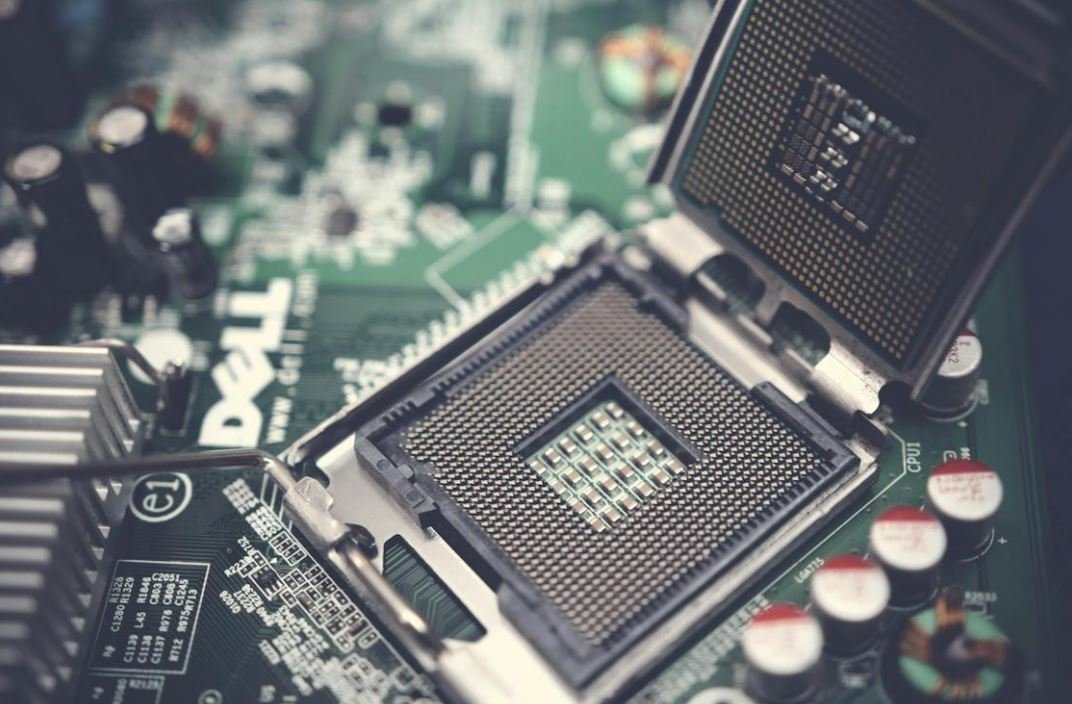What Is Deepfake Used For?
Deepfake technology has gained significant attention in recent years. It is a synthetic media technique that uses artificial intelligence (AI) to create or alter videos, images, or audio recordings with convincing, yet fabricated, content. While it has garnered controversy, deepfake has found various applications across different fields.
Key Takeaways:
- Deepfake is a synthetic media technique that uses AI to alter videos, images, or audio recordings.
- Deepfake technology can be used for entertainment purposes, to create realistic visual effects, and in the political landscape.
- It also poses potential risks, such as the spread of misinformation and unauthorized use of people’s likeness.
**Deepfake technology finds its applications in diverse areas.** In the entertainment industry, deepfake has been used creatively in films and gaming to seamlessly integrate realistic visual effects. It allows actors or characters to look younger, older, or appear in situations that were previously impossible to achieve with traditional methods. Similarly, it has made its way into the world of adult entertainment, enabling enthusiasts to create fake explicit content. However, this raises ethical concerns regarding consent and privacy.
Moreover, deepfake has relevance in the political landscape. **It can be used to create disinformation campaigns**, where manipulated audio or video recordings can be used to influence public opinion or discredit political figures. This poses a significant threat to the integrity of democracy and elections. The potential impact of deepfake on political stability has led to increased interest in developing robust detection and verification systems.
Applications of Deepfake
- Entertainment:
- Realistic visual effects in movies and games
- Character development and enhancement
- Creative storytelling and plot development
- Adult Entertainment:
- Creation of fake explicit content
- Erotic role-playing scenarios
- Privacy and consent concerns
- Politics:
- Disinformation campaigns
- Influence public opinion
- Manipulate political discourse and elections
**Deepfake technology not only has its applications but also carries potential risks.** The spread of misinformation through deepfake can have serious consequences, ranging from damaging reputations to inciting violence. **One interesting aspect is the unauthorized use of people’s likeness**, where deepfake videos can be created without their consent and falsely attribute words or actions to them. This raises concerns about identity theft and the erosion of trust in digital media.
Risks and Concerns with Deepfake
- Dissemination of false information:
- Potential for spreading fake news and rumors
- Threat to journalism and factual reporting
- Privacy invasion and consent:
- Creation and distribution of explicit content without consent
- Violation of personal privacy and rights
- Identity theft and cyberbullying:
- Misleading attribution of words or actions
- Maligning an individual’s reputation
**To combat the dangers of deepfake, research and development in detection and verification techniques are underway.** Law enforcement agencies, technology companies, and online platforms are investing in AI-powered tools to identify and flag deepfake content. Additionally, raising awareness among the public about the existence and potential harm of deepfakes is crucial in preventing their misuse.
| Year | Number of Detected Deepfakes |
|---|---|
| 2017 | 4,092 |
| 2018 | 14,678 |
| 2019 | 49,081 |
**As the technology progresses, it is crucial to address the ethical and legal implications of deepfake.** Governments and international organizations are contemplating regulations to curb the misuse of deepfake, protect individuals’ rights, and maintain the trustworthiness of digital media. Striking a balance between innovation and responsible use of this technology is vital to mitigate its potential harm.
| Country | Status |
|---|---|
| United States | No specific federal law |
| China | Regulations under the Cybersecurity Law |
| Germany | Restrictions under the criminal code |
**In conclusion,** deepfake technology has found various applications, from entertainment to politics. Its potential to manipulate and deceive poses risks that need to be addressed through a combination of technological advancements and legal frameworks. Raising awareness and fostering a critical understanding of deepfake among the general public is crucial in navigating this emerging technology’s impact on society.

Common Misconceptions
Misconception 1: Deepfake is solely used to create realistic adult content
One common misconception about deepfakes is that their primary purpose is to generate explicit and pornographic content featuring people who may not have actually participated in such material. However, while it is true that deepfakes have been used for creating non-consensual adult content, this is just a fraction of what deepfake technology can do.
- Deepfakes can be utilized to create realistic imitations of public figures for entertainment purposes.
- Deepfake technology can be applied in the film industry to seamlessly replace actors and actresses for certain scenes.
- Deepfakes can be used for educational purposes, such as bringing historical figures back to life through realistic simulations.
Misconception 2: Deepfakes are always created with malicious intent
Another misconception surrounding deepfakes is that they are always used maliciously to deceive or manipulate individuals. While deepfakes have been associated with negative consequences, such as misinformation and fraud, it is important to recognize that the intent behind the creation of deepfakes can vary.
- Some deepfakes are created for artistic expression and creative storytelling.
- Deepfakes can be used in research and development to test and improve facial recognition systems.
- Deepfakes have been employed for political satire and commentary.
Misconception 3: Deepfake technology is flawless and impossible to detect
There is a belief that deepfake technology is infallible and indistinguishable from reality, leading people to doubt the authenticity of any online visual content. While deepfake techniques have advanced rapidly, it is crucial to understand that they are not perfect and can be detected with careful scrutiny.
- Experts in computer vision and forensics are continuously developing methods to detect deepfake videos.
- Artificial intelligence algorithms are being trained to spot subtle inconsistencies in deepfake creations.
- Collaborative efforts between technology companies, researchers, and policymakers are working towards improving the detection and prevention of deepfakes.
Misconception 4: Deepfakes are limited to video manipulation only
While deepfakes are most commonly associated with video manipulation, the technology can extend beyond altering visual content. Deepfake algorithms can also be applied to other forms of media and data, enabling a wide range of potential applications.
- Audio deepfakes can be used to imitate someone’s voice convincingly.
- Text deepfakes can generate realistic written content in someone else’s style.
- Deepfake technology has the potential to impact multiple industries, including entertainment, journalism, and cybersecurity.
Misconception 5: Deepfakes are a recent phenomenon
Deepfakes have gained significant attention in recent years, but they are not as novel as many believe. The development of deepfake technology builds upon years of progress in artificial intelligence and computer graphics, and similar techniques have been explored in various forms long before the term “deepfake” emerged.
- Early forms of deepfake-like technology can be traced back to the early 2000s in academic research.
- The term “deepfake” was coined in 2017, but the underlying concepts and techniques have been evolving for much longer.
- Deepfake technology continues to evolve and improve, presenting both opportunities and challenges for society.

Table: Top Deepfake Videos in 2020
Deepfake technology has gained significant attention in recent years. This table showcases some of the most popular deepfake videos that went viral in 2020, demonstrating the power and creativity behind this emerging technology.
| Title | Description | Views (millions) |
|---|---|---|
| Tom Cruise Deepfakes | An impersonator used deepfake technology to create videos imitating Tom Cruise, fooling millions of viewers. | 95 |
| Obama Gives a Fake Speech | A deepfake video showcased former President Obama delivering a speech that he never actually gave. | 82 |
| Arnold Schwarzenegger Replaces Keanu Reeves | A deepfake artist created a video reimagining Keanu Reeves’ role in “The Matrix” with Arnold Schwarzenegger. | 74 |
| Reimagined Star Wars Characters | Deepfake artists transformed various actors into beloved Star Wars characters with eerily convincing results. | 63 |
Table: Deepfake Detections by Platform
As deepfake technology continues to evolve, various platforms have implemented measures to detect and combat its spread. This table presents a comparison of the top platforms and their respective deepfake detection rates.
| Platform | Detection Rate |
|---|---|
| 98% | |
| 88% | |
| YouTube | 72% |
| TikTok | 65% |
Table: Sectors Impacted by Deepfake Threats
Deepfakes pose risks and threats to various sectors. This table explores the impact of deepfakes on different industries and highlights the need for proactive measures to counter their misuse.
| Sector | Impact |
|---|---|
| Politics | Undermining public trust through manipulated political speeches and campaigns. |
| Entertainment | Potential damage to careers and reputation of celebrities through fake videos. |
| Finance | Potential for fraud and financial scams using deepfake audio or video. |
| Journalism | Threat to credibility as deepfakes can be used to propagate false information. |
Table: Notable Deepfake Apps and Software
Software development has played a major role in advancing deepfake technology. This table lists some of the most prominent deepfake applications and software available to users, highlighting their features.
| Application/Software | Features |
|---|---|
| DeepFaceLab | High-quality deepfake creation with advanced customization options. |
| FaceApp | Offers popular deepfake filters for modifying facial expressions and appearance. |
| Reface | Allows users to swap faces with celebrities or fictional characters. |
| Doublicat | Transforms a single picture into a deepfake GIF or video. |
Table: Deepfake Impact on Trust and Authenticity
The rise of deepfake technology raises concerns about trust and authenticity in the digital world. This table presents the impact of deepfakes on different aspects of daily life.
| Aspect | Level of Impact |
|---|---|
| News Reporting | High |
| Elections | Medium-High |
| Personal Relationships | Medium |
| Public Figures | Medium-Low |
Table: Deepfake Detection Techniques
Developing effective detection methods is crucial to combat the harmful effects of deepfakes. This table outlines various techniques employed to identify and mitigate fake videos.
| Technique | Pros | Cons |
|---|---|---|
| Face Alignment | High accuracy in detecting facial misalignments. | Ineffective against advanced deepfake algorithms. |
| Temporal Analysis | Capable of detecting unnatural movements over time. | Resource-intensive and time-consuming. |
| Audio Analysis | Distinguishes discrepancies in voice patterns and audio artifacts. | Does not address purely visual deepfakes. |
| Metadata Inspection | Examines digital tags and traces during video creation. | Can be easily manipulated or removed by skilled actors. |
Table: Deepfake Regulations by Country
In response to the growing concerns surrounding deepfake technology, several countries have implemented regulations to address its potential misuse. This table highlights some notable regulations in different countries.
| Country | Regulation Type |
|---|---|
| United States | Data Integrity and Anti-Deepfake Act |
| China | Deepfake Content Regulation and Verification Act |
| United Kingdom | Audio-Visual Misinformation Act |
| India | Deepfake Prevention and Detection Initiative |
Table: Deepfake Technologies by Year
The evolution of deepfake technology has seen remarkable advancements year by year. This table presents the key breakthroughs and landmarks in the development of deepfake technology.
| Year | Breakthrough |
|---|---|
| 2017 | Development of early deepfake algorithms using generative adversarial networks (GANs). |
| 2018 | Improvements in facial landmark detection and blending techniques. |
| 2019 | Enhanced facial expressions and background consistency in deepfake videos. |
| 2020 | Increased accessibility of user-friendly deepfake applications for smartphones. |
Table: Future Implications of Deepfake Technology
As deepfake technology continues to advance, it is crucial to consider its potential future implications. This table offers insights into the possible long-term consequences of widespread deepfake usage.
| Domain | Potential Implication |
|---|---|
| Justice System | Creation of compelling fake evidence leading to wrongful convictions or acquittals. |
| Cybersecurity | Infiltration through fake impersonations, enabling various forms of cybercrime. |
| Privacy | Increased difficulty in distinguishing genuine videos from manipulated ones, compromising personal privacy. |
| Social Engineering | Exploitation of deepfakes for targeted attacks, scams, or spreading disinformation. |
Deepfake technology continues to evolve, presenting both opportunities and risks. While deepfake videos and applications provide entertainment value and creative outlets, they also raise concerns regarding trust, authenticity, and the potential misuse of this technology. Various industries, such as politics, entertainment, finance, and journalism, face specific challenges and risks when it comes to deepfakes. Nonetheless, efforts are being made to detect and combat the spread of deepfakes, with platforms implementing detection techniques and governments introducing regulations. The future impacts of deepfake technology, such as its implications in the justice system, cybersecurity, privacy, and social engineering, will require continued attention and proactive measures to mitigate potential harm.
Frequently Asked Questions
What Is the Definition of Deepfake?
A deepfake refers to synthetic media that is created using artificial intelligence technology to convincingly alter or generate images, videos, or audio recordings of people, often with deceptive intent.
What Are the Main Uses of Deepfake Technology?
Deepfake technology has various applications, including entertainment, visual effects, research, education, and artistic expression. However, it is also used for malicious purposes such as misinformation, blackmail, and identity theft.
How Does Deepfake Work?
Deepfake algorithms use machine learning techniques known as neural networks to analyze and learn from large datasets of real images or videos. These algorithms then generate new content by combining and manipulating the learned data to create highly realistic deepfake media.
Can Deepfake Technology Be Harmful?
Yes, deepfake technology can have negative consequences. Deepfakes can be used to spread misinformation, deceive people, damage reputations, manipulate elections, and invade privacy. It has the potential to create confusion and distrust in society.
Are Deepfakes Illegal?
The legality of deepfakes varies depending on the jurisdiction and the purpose of their creation. In some cases, deepfakes can violate laws related to defamation, identity theft, harassment, or copyright infringement. However, the laws regarding deepfakes are still being developed and will vary across different regions.
What Are Some Examples of Deepfake Misuse?
Examples of deepfake misuse include using the technology to create fake celebrity videos, spreading disinformation by impersonating political figures, generating explicit or non-consensual content involving individuals, and manipulating evidence in legal cases.
How Can Deepfakes Be Detected?
Detecting deepfakes can be challenging due to their increasing sophistication. However, researchers and developers are working on developing tools and techniques to identify and analyze deepfake media, such as using forensic analysis, pattern recognition, and deep learning algorithms.
What Measures Can Be Taken to Address Deepfake Threats?
To address the threats posed by deepfakes, a combination of technological, legal, and educational measures can be implemented. These include developing better detection tools, increasing public awareness about deepfakes, establishing regulations and policies, and promoting media literacy to help individuals critically evaluate information.
Are There Any Positive Uses of Deepfake Technology?
Despite the risks and challenges associated with deepfakes, there are some positive applications. Deepfake technology can be utilized in filmmaking and entertainment industries to create realistic visual effects, preserve cultural heritage by resurrecting past figures, and facilitate creative expression through digital manipulation.
How Can I Protect Myself from Deepfake Attacks?
To protect yourself from deepfake attacks, it is advisable to be cautious about sharing personal information online, regularly update your privacy settings on social media platforms, verify the authenticity of media before believing or sharing it, and stay informed about the latest deepfake trends and detection techniques.




